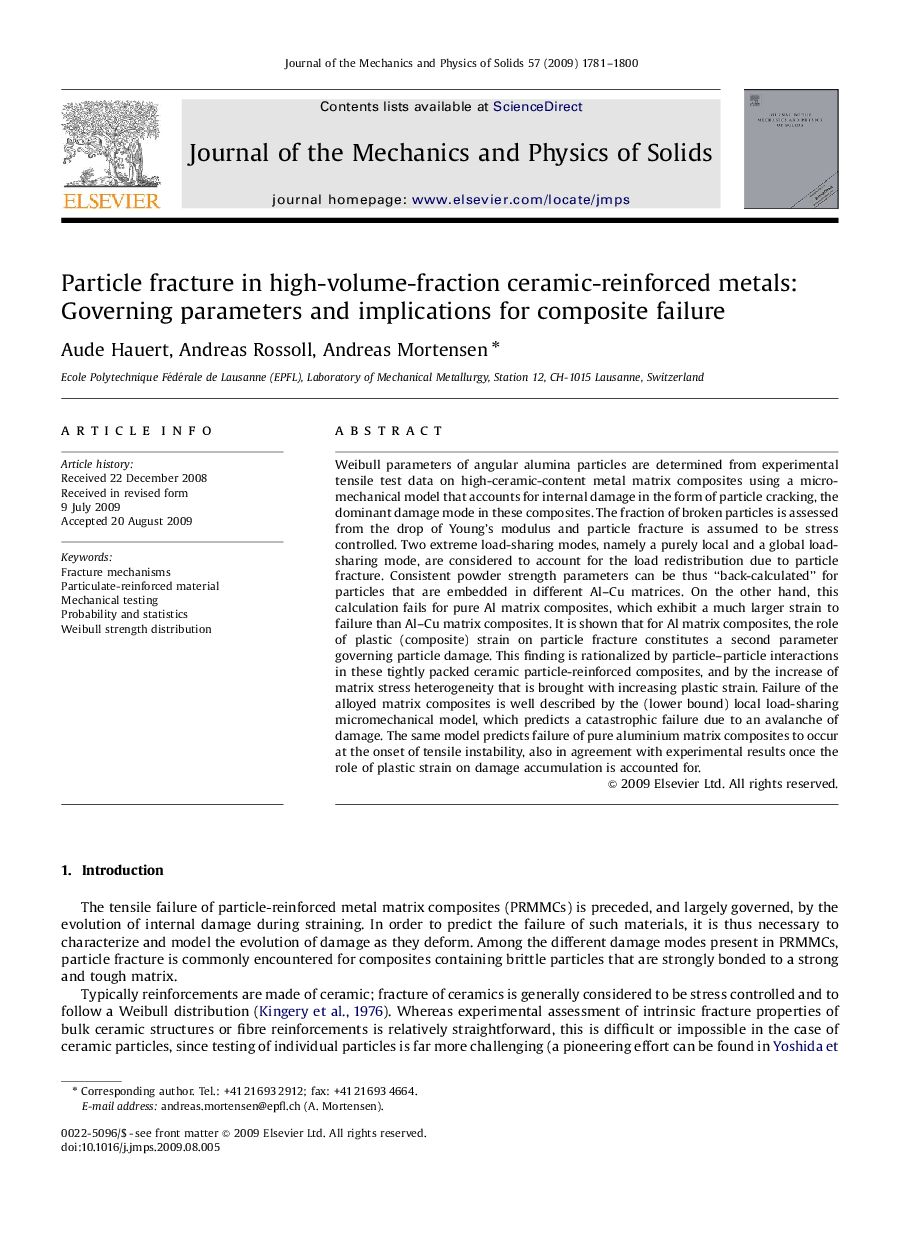| Article ID | Journal | Published Year | Pages | File Type |
|---|---|---|---|---|
| 796809 | Journal of the Mechanics and Physics of Solids | 2009 | 20 Pages |
Weibull parameters of angular alumina particles are determined from experimental tensile test data on high-ceramic-content metal matrix composites using a micromechanical model that accounts for internal damage in the form of particle cracking, the dominant damage mode in these composites. The fraction of broken particles is assessed from the drop of Young's modulus and particle fracture is assumed to be stress controlled. Two extreme load-sharing modes, namely a purely local and a global load-sharing mode, are considered to account for the load redistribution due to particle fracture. Consistent powder strength parameters can be thus “back-calculated” for particles that are embedded in different Al–Cu matrices. On the other hand, this calculation fails for pure Al matrix composites, which exhibit a much larger strain to failure than Al–Cu matrix composites. It is shown that for Al matrix composites, the role of plastic (composite) strain on particle fracture constitutes a second parameter governing particle damage. This finding is rationalized by particle–particle interactions in these tightly packed ceramic particle-reinforced composites, and by the increase of matrix stress heterogeneity that is brought with increasing plastic strain. Failure of the alloyed matrix composites is well described by the (lower bound) local load-sharing micromechanical model, which predicts a catastrophic failure due to an avalanche of damage. The same model predicts failure of pure aluminium matrix composites to occur at the onset of tensile instability, also in agreement with experimental results once the role of plastic strain on damage accumulation is accounted for.
